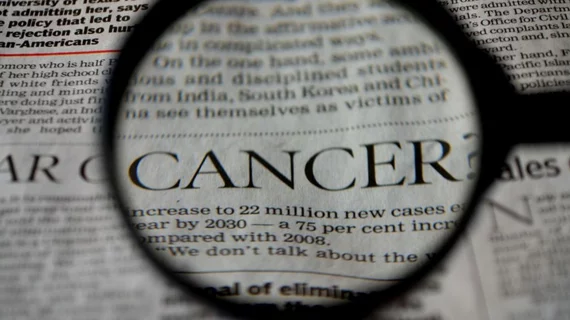1 in 10 cancer patients die from CVD
More than 10% of cancer patients in the U.S. die not from their cancer but from cardiovascular complications, according to a study published in the European Heart Journal Nov. 25.
A team at Penn State derived the figure from their study of more than 3.2 million American cancer patients who’d been diagnosed with the disease between 1973 and 2012. Using data from the Surveillance, Epidemiology and End Results (SEER) registry, Nicholas Zaorsky, MD, Kathleen Sturgeon, PhD, and colleagues compared the outcomes of those 3,234,256 patients against the health outcomes of the general U.S. population during the same time frame.
Zaorsky et al. found that of the cancer patients they studied, 38% died from cancer and 11% died from CVDs. Most CVD deaths—76%—could be attributed to heart disease.
The researchers considered 28 distinct types of cancer in their analysis, but the majority of CVD deaths occurred in patients with breast cancer or prostate cancer, which makes sense since those are two of the most commonly diagnosed cancers in the U.S. In 2012, 61% of all cancer patients who died from heart disease were diagnosed with breast, prostate or bladder cancer.
The percentage of patients who died from CVD was highest for bladder cancer (19%), cancer of the larynx (17%), prostate cancer (17%), cancer of the womb (16%), colon cancer (14%) and breast cancer (12%). The authors said patients with the most aggressive and hard-to-treat cancers—including cancers of the lung, liver, brain, stomach, gallbladder, pancreas and ovaries—were more likely to die from cancer than CVD.
“These findings show that a large proportion of certain cancer patients will die of cardiovascular disease, including heart disease, stroke, aneurysm, high blood pressure and damage to blood vessels,” Sturgeon said in a release. “We also found that among survivors with any type of cancer diagnosed before the age of 55 years, the risk of cardiovascular death was more than tenfold greater than in the general population.”
She said survivors with cancers of the breast, larynx, skin, thyroid, testes, prostate, endometrium, bladder, vulva, penis and Hodgkin lymphoma were “about as likely” to die of CVD as they were to die from their initial diagnosis.
In the same release, Zaorsky emphasized that as the number of cancer survivors inevitably increases, so will the number of deaths from CVD.
“Clinicians need to be aware that the majority of cardiovascular disease deaths occur in patients diagnosed with breast, prostate or bladder cancer,” he said. “Thus, clinics that aim to open ‘cardio-oncology’ centers should likely focus on the inclusion of these sites. Additionally, primary care physicians and cardiologists may seek to control cardiovascular diseases more aggressively in cancer survivors.”

